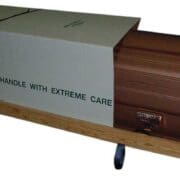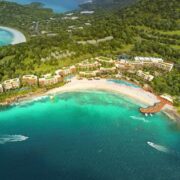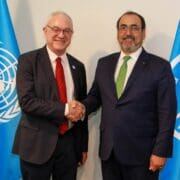Human remains returned to Statia 30 years after they were sent to the Netherlands
Black Immigrant Daily News
The remains of nine indigenous people shipped to the Netherlands after an archaeological dig over 30 years ago have been repatriated to Statia.
The bone fragments, along with other artefacts, were unearthed during the 1984-89 excavation at the F.D Roosevelt Airport by archaeologist Aad Versteeg as part of a research project by the Archaeological Centre of the Leiden State University in the Netherlands and the Archaeological-Anthropological Institute of the Netherlands Antilles on Cura?ao. The project investigated several archaeological sites in the Windward islands of the Netherlands Antilles, particular in Saba and Statia, to gain an insight into the way of life and patterns of organisation of the indigenous inhabitants of the islands in the pre-Columbian period.
Almost all the excavated material, including artefacts that dated back to the fifth century, was shipped to the Netherlands. The research results were published in the 1992 publication “The Archaeology of Sint Eustatius. The Golden Rock.”
Now, after a near year-long process, which included discussions between the authorities in Statia and the Netherlands, the human remains are back on the island. The Statia Cultural Heritage Implementation Committee will consult residents on burial, said Nasha Radjouki, the programme manager for culture with the Statia Government.
“It’s imperative that we involve the Statian community as we consider how and where to rebury these human remains in a respectful way,” Radjouki emphasised. “The Statian community must know that there is more to their history than just what has been written, and be involved in the new narrative.”
The transfer agreement for the return of the remains was signed last month by Government Commissioner Alida Francis, in the presence of Island Commissioners Derrick Simmons and Glenville Schmidt, Radjouki, and members of the St. Eustatius Center for Archaeological Research, a non-governmental organisation involved in the study of all aspects of the rich and diverse archaeological heritage of the island.
“The discovery more than 30 years ago, and the eventual return of the remains of the indigenous people, helps us to recognise that in addition to the enslaved Africans, we also had an indigenous community who had their own burial grounds,” said Francis. “Our story is much broader and richer than even we thought, and it’s up to us to tell this story.”
The return of human remains is the first phase of a wider repatriation project being undertaken by the Department of Culture. The rest of the artefacts – boxes of ceramic, lithia, coral, shell food remains and artefacts – will be returned in the third quarter of this year. Following this, the process will begin to have William and Mary College, a US public research university, to return a collection of Statian artefacts currently in its possession.
Donate At Caribbean News Service, we do not charge for our content and we want to keep it that way. We are seeking support from individuals and organisations so we can continue our work & develop CNS further.
NewsAmericasNow.com








